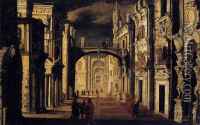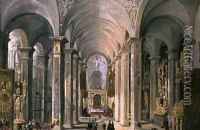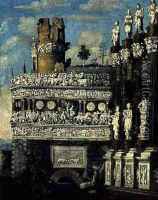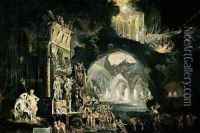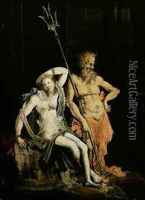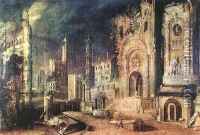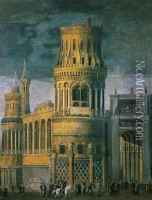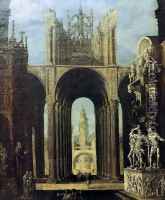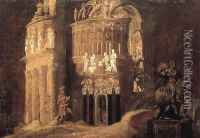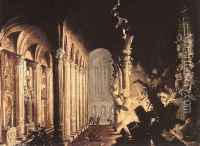Francois de Nome (Monsu, Desiderio) Paintings
François de Nomé, also known as Monsu Desiderio or simply Desiderio, was a French Baroque painter who is known for his complex architectural fantasies. Born around 1593 in Metz, which was then part of the Holy Roman Empire and now is in France, very little is known about his early life and training. It is speculated that he may have studied under a local painter before moving to Rome, where he could have been influenced by the works of artists like Paul Bril and the architectural visions of Giovanni Paolo Panini.
By 1610, de Nomé had moved to Naples, which was a bustling center for artists at the time due to the presence of the Spanish viceroys. In Naples, he became associated with another artist, Didier Barra, who hailed from Metz as well. The two were often confused with one another, and for a time, their works were attributed interchangeably.
De Nomé’s paintings are remarkable for their ruinous landscapes and fantastical architecture, often infused with a sense of the apocalyptic. His works typically feature dramatic use of light and shadow, with grandiose classical buildings in a state of decay and populated with tiny figures that emphasize the grandeur and scale of the architecture. He is best known for his depictions of Biblical and historical scenes set amidst these imaginative and often chaotic cityscapes.
Despite his distinctive style, François de Nomé did not leave behind a significant body of work, and as such, little is known about his patrons or the commissions he undertook. His last known signed and dated work is from 1623, although documents indicate that he was still alive in 1627. The exact date of his death remains unknown.
De Nomé’s work was largely forgotten until the 20th century when art historians began to study his unique contributions to the Baroque movement. His paintings are now recognized for their creativity and the skill with which he rendered architectural space. Today, his works can be found in various art museums around the world, appreciated for their imaginative qualities and enigmatic presence in the history of art.

